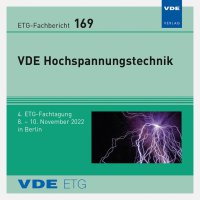Frequency-dependent permittivity and dissipation factor of solid insulation materials in liquid nitrogen
Konferenz: VDE Hochspannungstechnik - 4. ETG-Fachtagung
08.11.2022 - 10.11.2022 in Berlin, Germany
Tagungsband: ETG-Fb. 169: VDE Hochspannungstechnik 2022
Seiten: 5Sprache: EnglischTyp: PDF
Autoren:
Schmid, Andre; Franke, Steven; Humpert, Christof (Laboratory of High Voltage Engineering, Institute of Electrical Power Engineering, TH Köln (University of Applied-Sciences), Cologne, Germany)
Inhalt:
In addition to the dielectric strength, the permittivity and the dissipation factor are key criteria for the choice of the electrical insulating system used in high voltage applications. To calculate the electrical stress applied to an insulation system the permittivity of the insulating materials must be known. The dissipation factor is decisive for the determination of dielectric losses especially at high AC voltages. To enable this kind of calculations for superconducting devices cooled with liquid nitrogen (LN2) the relative permittivity and the dissipation factor of solid insulation materials are measured in LN2 and air over a frequency range from 100 muHz to 5 kHz. In LN2, the results show for all materials under investigation an almost constant behaviour of the permittivity with a minimal decrease in permittivity with increasing frequency. Nonporous materials, mostly film materials such as PI, PTFE, PEN, PET, and PEI have been shown to remain unaffected by the surrounding LN2, except for the permittivity and dissipation factor reducing effect of low temperature. The porous materials cotton paper, Tyvek, Nomex, and PPLP on the other hand show an increase in permittivity due to impregnation with LN2. The results of the dissipation factor measurements in LN2 and air show a similar frequency-dependent behaviour. Only the temperature reduction caused by LN2 leads to a reduction of the dissipation factor by all materials except PTFE.


